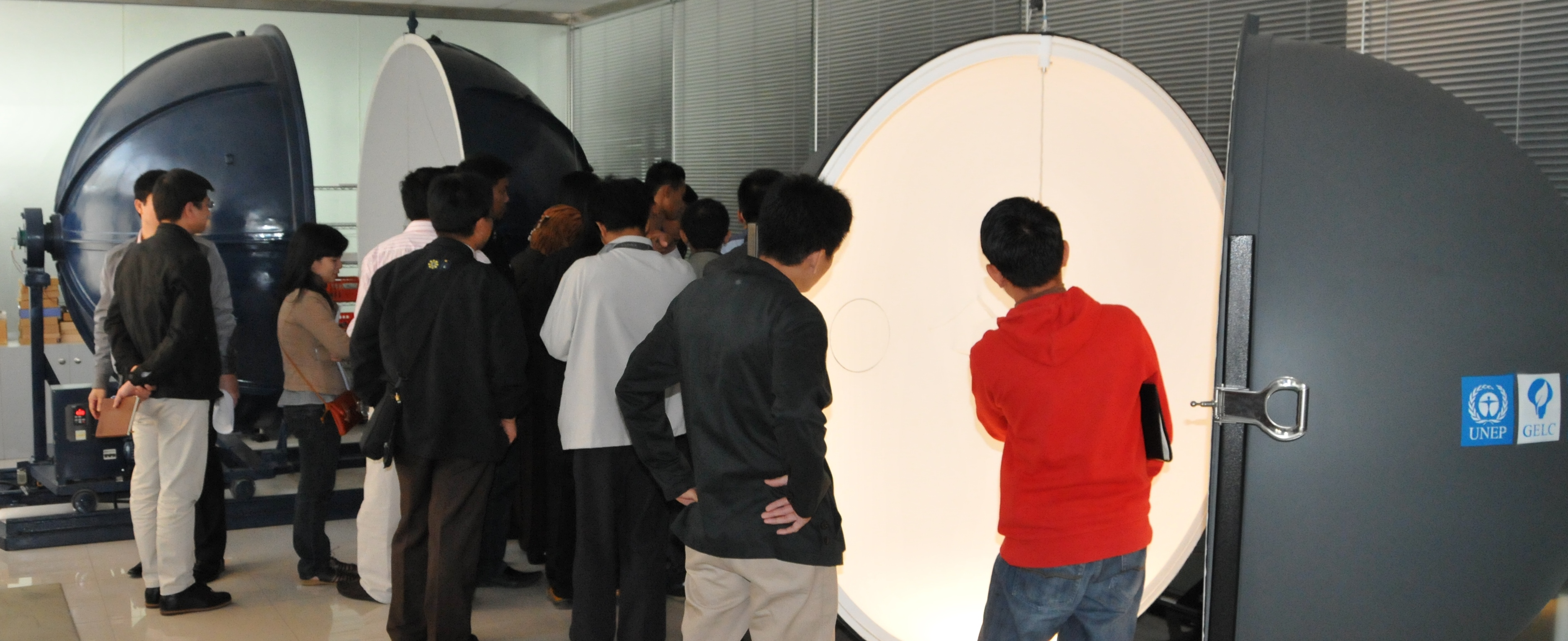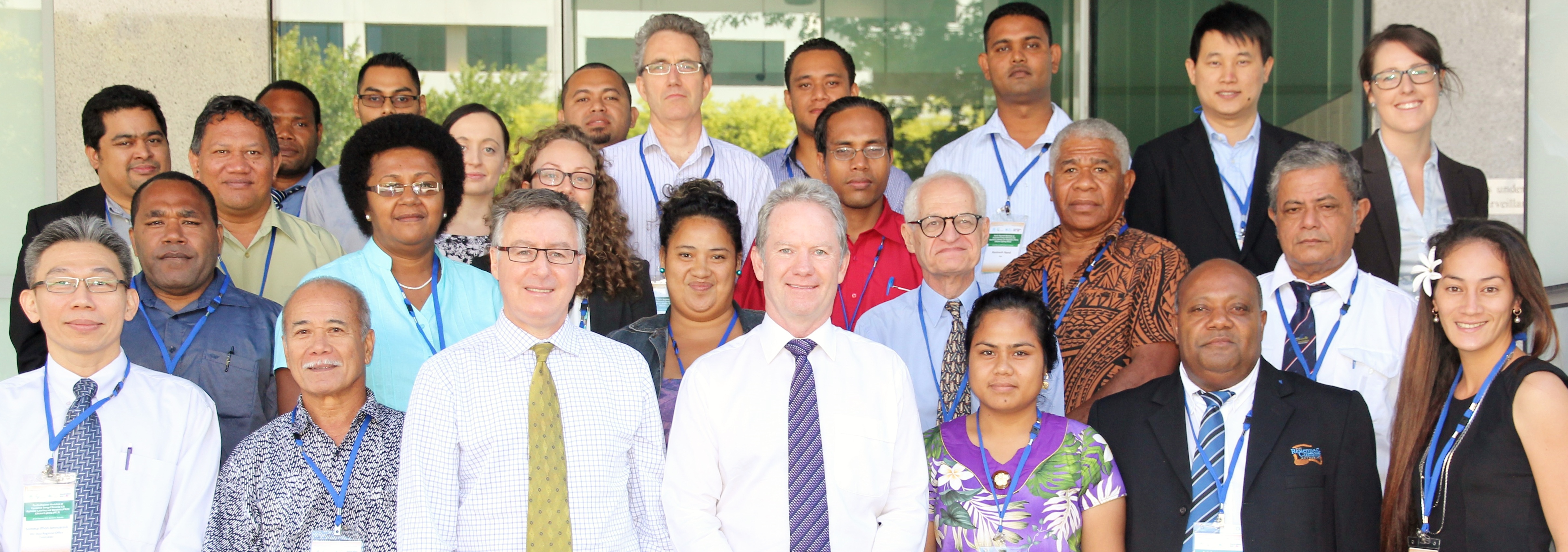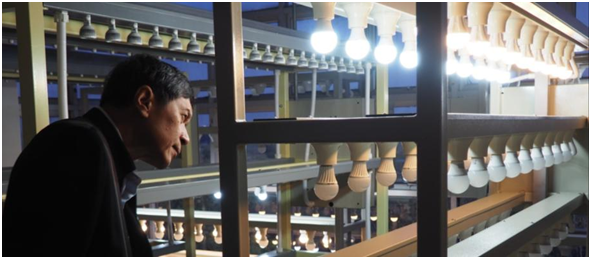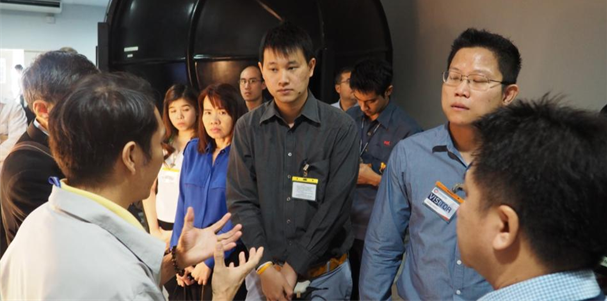In this issue we provide details of the:
- ASEAN EE&C-SSN agreement to develop harmonized lighting policy and standards;
- Beijing UNEP-lites.asia laboratory training workshop, April 2015;
- Progress in the development of the Secretariat of the Pacific Community’s Regional Efficient Lighting Strategy;
- Progress with the regional CFL testing exercise and inter-laboratory comparison testing project;
- Two recent CLASP studies which indicate the fast decline in price and increase in LED performance in Europe;
- UNEP-lites.asia training materials and tools in support of policy makers and laboratory staff;
- UNEP-lites.asia webinar programme.
ASEAN Commits to Switch to Efficient Lighting

Assembled in Kuala Lumpur on 24 April 2015 for the 19th annual meeting of the Energy Efficiency & Conservation Sub-Sector Network (EE&C-SSN), Directors of Energy of ASEAN countries committed themselves to working together towards regionally harmonized efficient lighting standards and policies, a move that will significantly reduce energy consumption in the region.
At the meeting, organised by the ASEAN Center for Energy, these representatives agreed that coordinating policies for high efficiency lighting solutions, such as light emitting diode technology, offer immense potential to significantly reduce energy consumption in the region. Estimates by the UNEP en.lighten initiative show that the market transition to efficient lighting in ASEAN could result in annual savings of over US$ 3.5 billion in electricity bills for consumers and a reduction of 35 TWh in electricity consumption, as well as an associated decrease in CO2 emissions of more than 20 million tonnes.
The emergence of the ASEAN Economic Community that would develop a single market in 2015 is also a remarkable opportunity to foster intra-regional trade of high-quality lighting products to speed up the transition to efficient lighting.
The regional harmonization of policies and standards in ASEAN was initiated 2012 for air conditioners, under the ‘ASEAN SHINE’ process, coordinated by UNEP and the International Cooper Association, in cooperation with the ASEAN Center for Energy. Upcoming regional work for lighting standards harmonization will build on this experience, as well as on the network and resources established through lites.asia, with the support of the Australian Government.
To find out more about the agreement, click here.
Beijing UNEP-lites.asia laboratory training workshop

Over 2.5 days from 22 to 24 April 2015, 17 lamp testing laboratory representatives from five Southeast Asian countries (Indonesia, Malaysia, Philippines, Thailand and Viet Nam) received expert training on the testing of energy efficient lighting products at a UNEP-lites.asia laboratory training workshop conducted in the Global Efficient Lighting Centre (GELC) in Beijing, China. The training was delivered by GELC experts, along with Yoshi Ohno from the US National Institute of Standards and Technology (NIST) and UNEP consultant, Steve Coyne.
The workshop, which forms part of the UNEP-GEF en.lighten initiative's Southeast Asia and Pacific Monitoring, Verification and Enforcement (MVE) Project activities supported by the Australian Government , combined lectures and discussion and hands-on sessions addressing photometric and colorimetric measurement, as well as goniophotometric and integrating sphere measurement, in compliance with the most recent international test methods. This included the recently published CIE S 025/E:2015, Test method for LED Lamps, LED Luminaires and LED Modules. The workshop also covered the assessment and calculation of measurement uncertainty and trends in international lighting standard, and lighting technology, development.
In strengthening the technical expertise of these representatives in the testing of compact fluorescent and light emitting diode lamps, the workshop aimed to help laboratories in the region increase their capacity for the verification testing of efficient lighting products and overcome one of the most often cited barriers to effective enforcement of standards and labelling programmes.
Secretariat of the Pacific Community Regional Activities on Energy Efficient Lighting

Since mid-2014, the Secretariat of the Pacific Community (SPC) and the UNEP-GEF en.lighten initiative, supported by the Australian Government, have been collaborating on the development of a Pacific Efficient Lighting Strategy (PELS) as part of the Southeast Asia and Pacific Monitoring, Verification and Enforcement project.
Preparation of the PELS document has been undertaken through a consultative approach. After a regional kick-off meeting in September 2014, a working group discussion was organised in Canberra, Australia on 25 February 2015, as part of a larger Pacific Appliance Labelling and Standards (PALS) regional workshop, funded by the Government of Australia.
This second PELS working group discussion was facilitated by the International Institute for Energy Conservation. The PELS meeting was attended by 18 delegates, representing 11 Pacific Island countries. Representatives from SPC, UNEP, the Australian Government and the lighting industry also participated and shared their valuable input during the discussion. The PELS working group discussed various issues relating to the phase-out of incandescent lamps and promotion of energy efficient lighting in the Pacific region. Some of the topics raised included: minimum energy performance standards (MEPS) for lighting products in the Pacific; supporting policies and mechanisms; and environmentally sound management of lamps’ life cycle.
The working group agreed in general that MEPS requirements for non-incandescent technologies will follow the Australia/New Zealand approach, and that two different MEPS levels for 110-120V and 220-240V power supply will be initially adopted by PELS. The PELS preparation team is planning to finalise the PELS document and organise a technical validation workshop in July 2015. The final document will then be submitted to the Pacific Countries’ Energy Minister for a political adoption.
Regional Mercury and Performance Lamp Testing Activity
As part of its Southeast Asia and Pacific Monitoring, Verification and Enforcement project, supported by the Australian government, the UNEP-GEF en.lighten initiative is collaborating with six Southeast Asian countries (Cambodia, Indonesia, Lao PDR, Philippines, Thailand and Vietnam) on a lamp testing activity that follows on from the lamp sampling exercise discussed in the last newsletter.
To date, the initial performance of 80 models of compact fluorescent lamps sampled from the national markets, under the coordination of the International Institute for Energy Conservation, have been tested by the Global Efficient Lighting Centre in Beijing, China against the International Electrotechnical Commission (IEC) performance standard, IEC 60969, Self-ballasted lamps for general lighting services - Performance requirements. The parameters tested include lamp power, power factor, luminous flux, efficacy, colour rendering index, correlated colour temperature and standard deviation colour match. Testing of the luminous maintenance after 2,000 hours is still underway.
Although the analysis of these initial performance tests is not complete, preliminary findings suggest that there are quality issues with some models from all of the countries – primarily with efficacy and colour quality (as represented by colour rendering index and standard deviation colour match).
This testing exercise also undertook mercury content testing. Two tests were carried out to determine the amount and format of the mercury contained in the lamps against international standards, IEC 62554, Sample preparation for measurement of mercury level in fluorescent lamps, and IEC 62321, Electrotechnical products - Determination of levels of six regulated substances (lead, mercury, cadmium, hexavalent chromium, polybrominated biphenyls, polybrominated diphenyl ethers).
The mercury in lamps can take two forms – amalgam or non-amalgam – and there is an increasing trend towards the adoption of amalgam in lamps. Testing during this exercise identified that 71% of the sampled CFLs used amalgam technology and 29% used non-amalgam technology.
The average mercury content across all the lamps was less than 3 mg. However, there was a large range of levels across the samples – with the lowest mercury content being less than 1 mg and the highest more than 10mg. For the amalgam lamps, 81% of the models contained less than 2.5mg of mercury, although two models had a mercury content greater than 5mg. The average mercury content of the non-amalgam lamps was 4.24mg – with only 13% of the models containing less than 2.5mg of mercury, and 22% of the models containing more than 5mg. With ratification of the Minamata Convention on Mercury in October 2013, a maximum mercury content of 5mg was specified for CFLs (≤ 30W) for general lighting purposes.
The generic results for these compact fluorescent lamp tests will be published and distributed to the lites.asia members in mid-2015. Testing of approximately 20 light emitting diode lamps sampled in the six countries as part of the original lamp sampling exercise is currently underway.
Inter-laboratory Comparison Testing Project for LED Lamps

In a second exercise under its Southeast Asia and Pacific Monitoring, Verification and Enforcement project, supported by the Australian government, the UNEP-GEF en.lighten initiative is conducting an inter-laboratory comparison testing project for light emitting diode (LED) lamps. The objective of this exercise is to understand the measurement capabilities of the six participating laboratories, identify the key testing issues and help the laboratories strengthen their capacity.
The exercise has been carried out in line with the requirements of International Standards Organisation (ISO)/International Electrotechnical Commission (IEC) standards ISO/IEC 17043, Conformity assessment: General requirements for proficiency testing - Lamp characteristics. Lamp characteristics such as total luminous flux, active power, luminous efficacy, chromaticity, correlated colour temperature and colour rendering index, have been measured against the International Commission on Illumination (CIE) test method for LED lamps S 025/E: 2014, Test Method for LED Lamps, LED Luminaires and LED Modules, by the reference laboratory (the Global Efficient Lighting Centre (GELC) in Beijing, China) before and after testing by the participating laboratories, located in Indonesia, Philippines, Thailand and Vietnam. The results have been compared to assess the relative differences between the participants’ measurement values and the reference values obtained by GELC.
The results of this comparison are now being verified by the participating laboratories and, once confirmed, the key lessons learned from the exercise will be made available to lites.asia members.
European Market for LED Lighting Progressing More Rapidly Than Expected
Recent studies conducted by CLASP, in collaboration with numerous European governments and organisations, examining the current and future market for light emitting diode (LED) lighting products in Europe, shed light on some exciting developments in the evolution of LED lamp prices and efficiency levels, finding that the European market for LED lighting has developed at a much faster rate than expected.
In one study, conducted by CLASP, the Swedish Energy Agency (SEA), the Belgian Federal Ministry for Health, Food Chain Safety and Environment, and the European Council for an Energy-Efficient Economy (eceee), some LED lamps in 2014 were found to be three to five years ahead of the price and energy performance levels forecast by a technical report produced for the European Commission in 2013. Furthermore, after 1,000 hours of lamp testing, 88% of the models tested were found to meet all European Union quality requirements.
A second study, conducted by CLASP in collaboration with the Danish Energy Agency (DEA) and Energy Piano, tells a similar story. It finds that the price of LED lamps from major European manufacturers are 5-11 years ahead of expert forecasts. Some LED lamps have become so affordable that, when used for three hours per day, they will pay for themselves in energy savings in less than one year. The study also finds that, in addition to these financial benefits, the shape, size and light quality of the tested LED lamps are comparable to those inefficient lighting products that LEDs might replace.
For more information, click here.
UNEP-lites.asia in-country training for policy makers and laboratory staff

In parallel with the lites.asia meetings in Indonesia and Thailand in August 2014 and February 2015 respectively, the UNEP-GEF en.lighten initiative Southeast Asia and Pacific Monitoring, Verification and Enforcement Project, supported by the Australian Government, provided additional in-country training sessions for policy makers and laboratory staff. These sessions provided insights on how to benchmark a lighting product market and determine saving potentials in order to develop cost-benefit analyses to adopt appropriate MEPS levels. The sessions also covered the establishment of performance levels and programme requirements, with stakeholders’ input to obtain maximum buy-in and participation. These sessions were delivered by Steve Coyne, UNEP consultant, with contributions from independent expert, Tony Bergen, and Wang Jing, from GELC, to the Bangkok and Jakarta laboratory training sessions respectively.
In addition, a workshop for government policy makers introducing the concepts of, and best practice for, minimum energy performance standards and monitoring, verification and enforcement activities for lighting products was delivered by Marie Leroy, from UNEP, and Michael Scholand, UNEP consultant, during a visit to Myanmar in February 2015.
The presentations from these training sessions are now available as a resource for all lites.asia members. To download copies, click here.
UNEP-lites.asia Informational and Technical Webinars
The UNEP-GEF en.lighten initiative is hosting webinars on monitoring, verification and enforcement topics. To date, eight webinars have been held:
- Lighting Product Benchmarking as an Energy Baseline for Change;
- Developing a Legislative Framework to Support Successful Monitoring, Verification and Enforcement Activities for Energy Efficient Lighting;
- Testing Lamp Efficacy, Lumen Maintenance, Rated Life and Uncertainties;
- Lighting Product Registration Systems: Design and Operation;
- Evaluation Indicators for Energy Efficient Lighting MVE Policy;
- Lamp Product Performance Tests and Interpretation of Results;
- Communication of Lighting Product Performance Standards and Labelling Programmes to Supply Chain Providers;
- CIE Test Method Standard for LED Lamps.
The next webinar, Best Practices for Enforcing Efficient Lighting Regulations, is scheduled for 28 May 2015 (TBC).
To download the presentations and audio recordings from the first eight webinars, click here.
Dates for Your Diary
UNEP-GEF en.lighten initiative lites.asia webinar
Best Practices for Enforcing Efficient Lighting Regulations
28 May 2015 at 07:00 UTC, 09:00 CEST, 14:00 ICT (TBC)
IEC TC 34 Working Group Meetings
25 May – 5 June 2015 – Sydney, Australia
5 June 2015 – Worldwide
